The 8 Highest peaks in Nepal Over 8000 M
Punam Phuyal
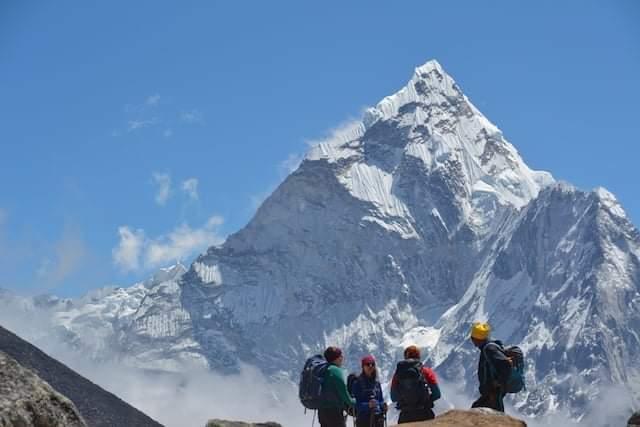
Nepal is a land locked country located in central Asia. The northern part of Nepal encompasses mountains of the Great Himalayas from eastern to western Nepal. The central Himalaya, with highest peak in the world, lies in Nepal. Along with Mount Everest, there are eight highest peaks in Nepal over 8000 M. These mountains are the wonder of the world, with their water tower, serene beauty, biodiversity and riparian habitat supporting millions of lives. This article gives detailed information about eight highest peak in Nepal.
The 8 highest Mountains peaks in Nepal over 8000 M
- Mount Everest (8,848.86 meters / 29031.69 feet)
- Kanchenjunga (8586 m/ 28169.29 feet)
- Lhotse (8516 m/ 27939.63 feet)
- Makalu (8463 m/ 27765.75 feet)
- Cho Oyu (8,201 m/ 26906.17 feet)
- Dhaulagiri (8167 m/ 26794.62 feet)
- Manaslu (8163 m/ 26781.5 feet)
- Annapurna (8,091 m/ 26545.28 feet)
Mount Everest (8848.86 m/ 29031.69 feet): the highest peak in the world
Mount Everest is the highest mountain peak in the world with an elevation of 8848.86 meters above sea level. It lies in northern part of Nepal at 27.988121° N and 86.924975° E. The Mt. Everest is a pride of Nepal that is playing a valuable role in introducing Nepal throughout the world. It is positioned in geographical boundary of Nepal and China. The northern face of Everest turns towards China whereas southern face is turned towards Nepal. Sagarmatha is the Nepali name of Mount Everest.
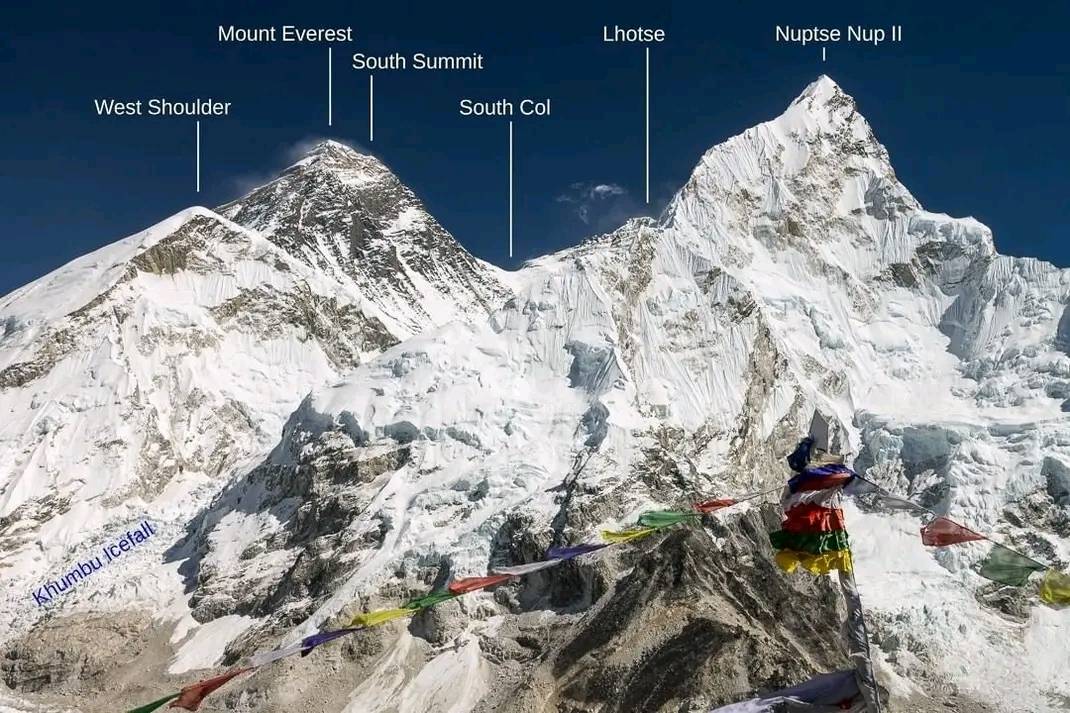
Sagarmatha/Mt Everest is in Solukhumbu district, Khumbu region, Koshi province Nepal. It is protected by establishing Sagarmatha national park on 1976 AD July 19 which is enlisted in UNESCO world heritage site. It takes around 12 days for Everest base camp trek and 45 days for Everest Expedition. There are numerous trekking sites in Everest region to encounter Mount Everest.
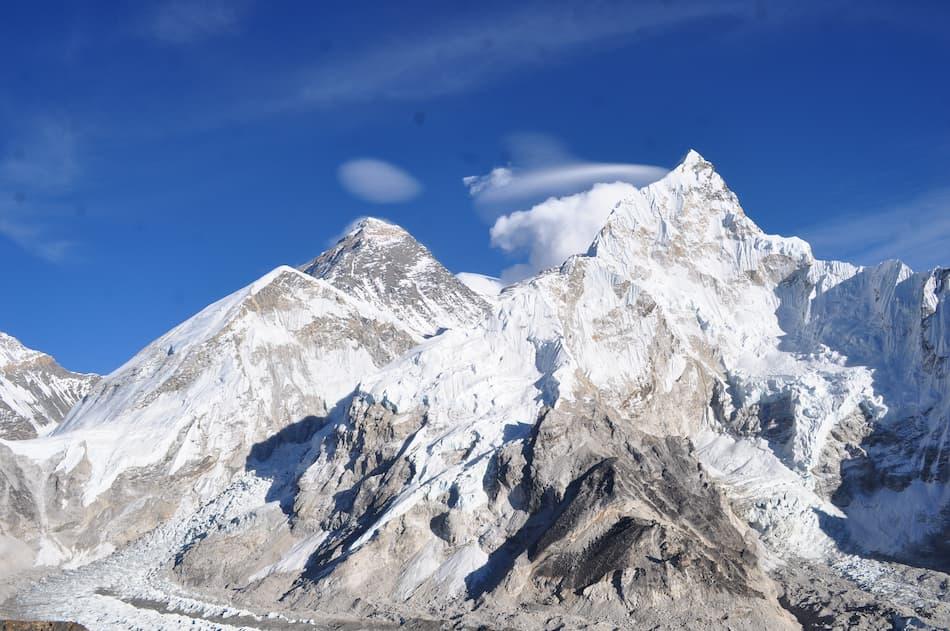
Complete 14-day EBC trekking itinerary for 2025-2026. Includes costs, packing list, and expert tips for the perfect Everest Base Camp trek. Book now!
US$1,250
Kanchenjunga (8586 m/ 28208.66 feet): third highest peak in the world
Mount Kanchenjunga is the third highest mountain in the world that rises above 8000 m, measuring 8586 m above sea level. It is in Koshi Province, Taplejung District, Nepal, at 27.702491° N and 88.147535° E. It is directed in northeast Nepal, geographically bordered with Sikkim, India. It was considered as the highest mountain in the world before knowing the elevation of Mount Everest and mount K2 in 1856 AD. Mt Kanchenjunga is known as the king of the mountain, with its four ridges extending in all four directions: east west north, and south. It was conserved by establishing Kanchenjunga conservation area (KCA) in 1998 AD. The KCA is bordered by Tibet Autonomous Region (TAR) of China in the north and Khangchenzonga Nation Park of Sikkim in the east. The beauty of Kanchenjunga can be explored by Kanchenjunga base camp trek in Nepal, that extends to Sikkim as well.
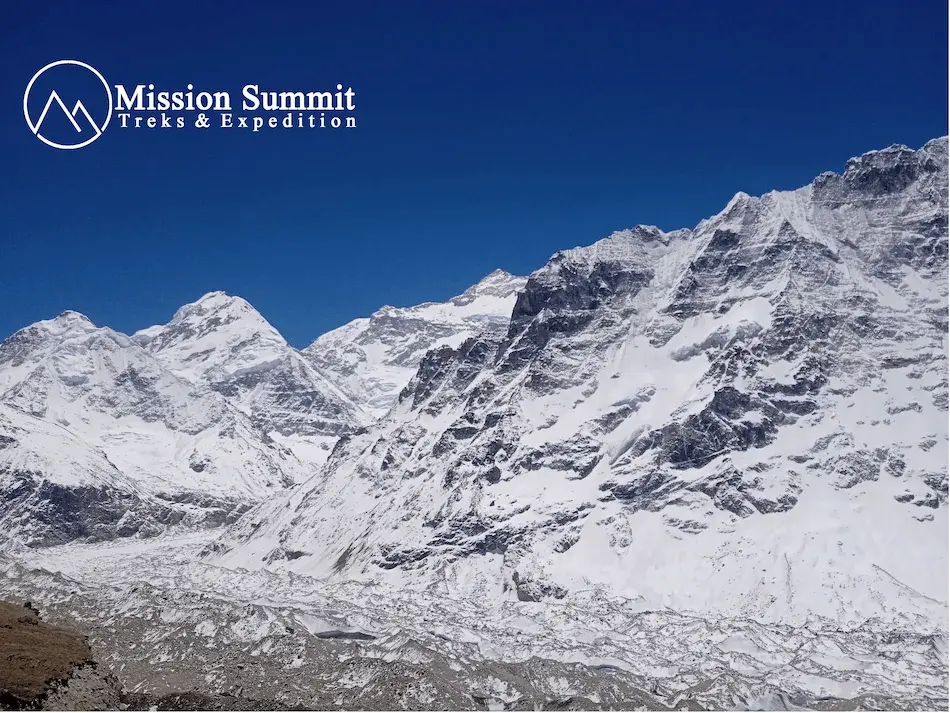
Lhotse (8516 m/ 27939.63 feet): fourth-highest mountain in the world
Lhotse is the fourth highest mountain in the world, located in Nepal at 27.962564° N and 86.933608° E, bordering Tibet, China. It is the closest mountain to Everest with a common expedition route. Mount Lhotse has four ridges with distinct summits. Lhotse main summit, with 8516 m, is the highest among Lhotse East (8414 m), Lhotse Central II (8372 m) and Lhotse Shar (8383 m). We can have amazing view of Lhotse with its four summits from Kalapather, Tengboche, Dingboche and different view point of EBC trekking. It is visible during Everest three passes trek, Gokyo Cho La pass Trek, the Everest Panorama Trek, and different trekking activities in Everest region.
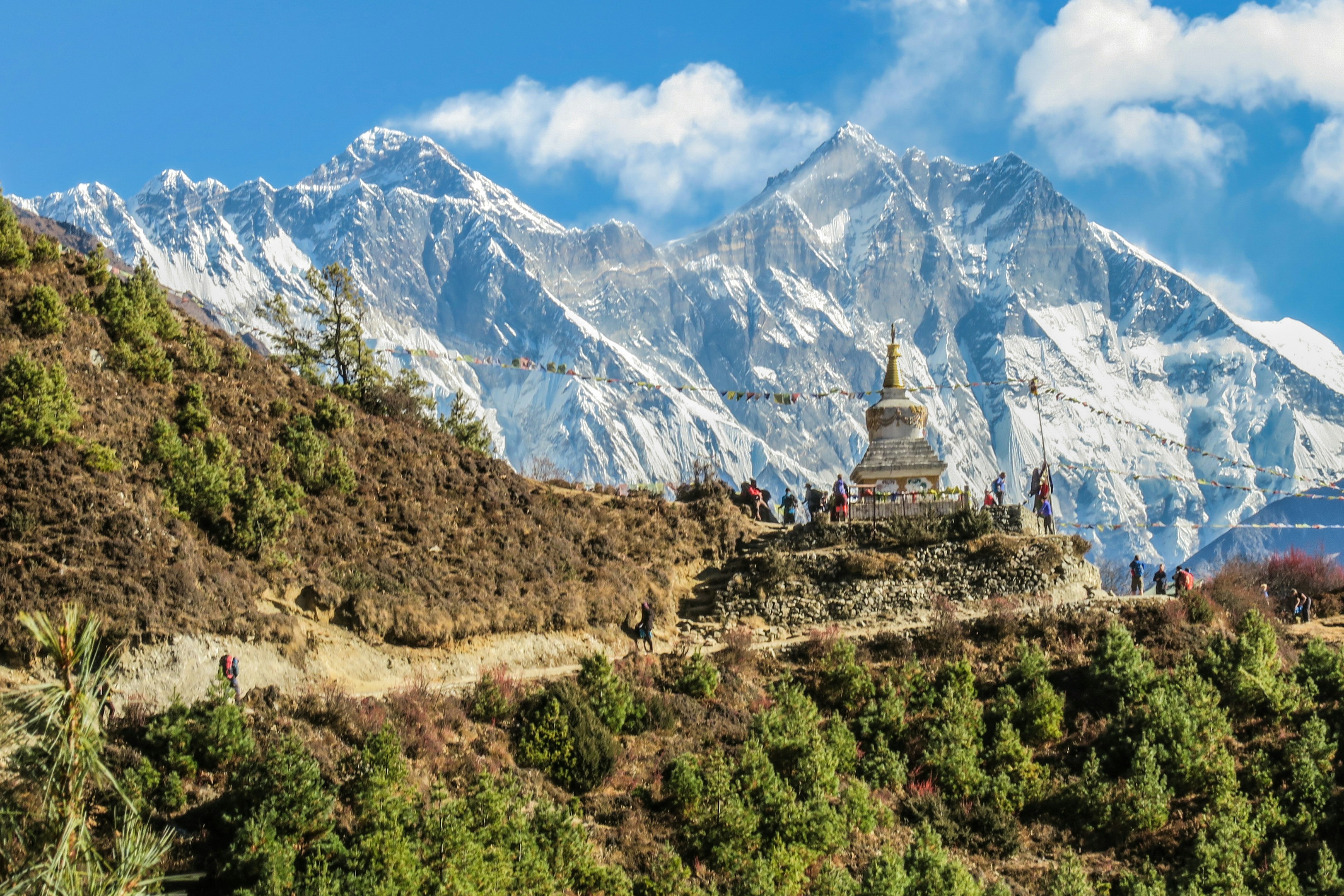
Makalu (8463 m/ 27765.75 feet) : Fifth highest peak in the world
Mount Makalu is the fifth-highest peak in the world and fourth highest peak in Nepal. It is in Koshi Province, Solukhumbu district, Nepal, at 27.885746° N and 87.087649° E, bordering China. Mount Makalu is a significant peak in Mahalangur range, central Himalaya that seems like a Pyramid with four sides. Makalu is an expedition peak with two greater peaks in its ridges, i.e., Makalu I (8463 m) and Makalu II (7, 678 m), or Kangchungste. It can be seen from the trekking route to Everest base camp in Nepal and advanced base camp in Tibet.
Mount Cho Oyu (8,201 m/ 26906.17 feet): Sixth highest peak in the world
Mount Cho Oyu is the sixth highest peak in the world and fifth highest peak in Nepal. It is located in Koshi Province, Solukhumbu district, at 28.096032° N and 86.661494°E, within the borders of Nepal and China. Mt. Cho Oyu is the Prominent Mountain that stands 20 km west of Mount Everest in Mahalangur range. It is an expedition peak which was first climbed by Hebert Tichy, Joshep Jochler and Pasang Dawa Lama in 10 -19 -1954 AD. The mountain can be seen from different viewpoints of Everest base camp trek and other trekking in Everest region both from Nepal and Tibet Autonomous region.
Dhaulagiri (8167 m/ 26794.62 feet): Seventh highest peak in the world
Mount Dhaulagiri is the seventh highest peak in the world and sixth highest peak in Nepal. It lies in Myagdi district, Gandaki province at 28.698465° N and 83.487350° E without bordering to India or China. It has six significant ridges i.e. Dhaulagiri I (8,167 m), Dhauagiri II (7,751 m), Dhaulagiri III (7715 m), Dhaulagiri IV (7661 m), Dhaulagiri V (7618 m), and Dhaulagiri VI (7000 m). It is an expedition peak which was first climbed by Fritz Moravec in 1959 AD. The amazing view of Dhaulagiri range can be explored from Dhaulagiri circuit trek route, Poonhill, Mustang, Manang and different viewpoints of Annapurna.
Manaslu (8163 m/ 26781.5 feet): Eighth highest peak in the world
Mount Manaslu is the eighth highest peak in the world and seventh highest peak in Nepal. Geographically, it is located in Himalayan region, Gandaki Province at 28.549711° N and 84.559677° E bordered between Manang and Gorkha district. It is being conserved by establishing Manaslu conservation area in 1998 AD. It is an expedition peak which was first climbed by Toshio Imanishi and Gyalzen Norbu in 05-09-1956 AD. Since, the summit of Manaslu was climbed first by Japanese expedition team, it is also known as Japanese mountain. We can have fabulous views of Manaslu from Manaslu circuit trek, Annapurna circuit trek and Poonhill trek.
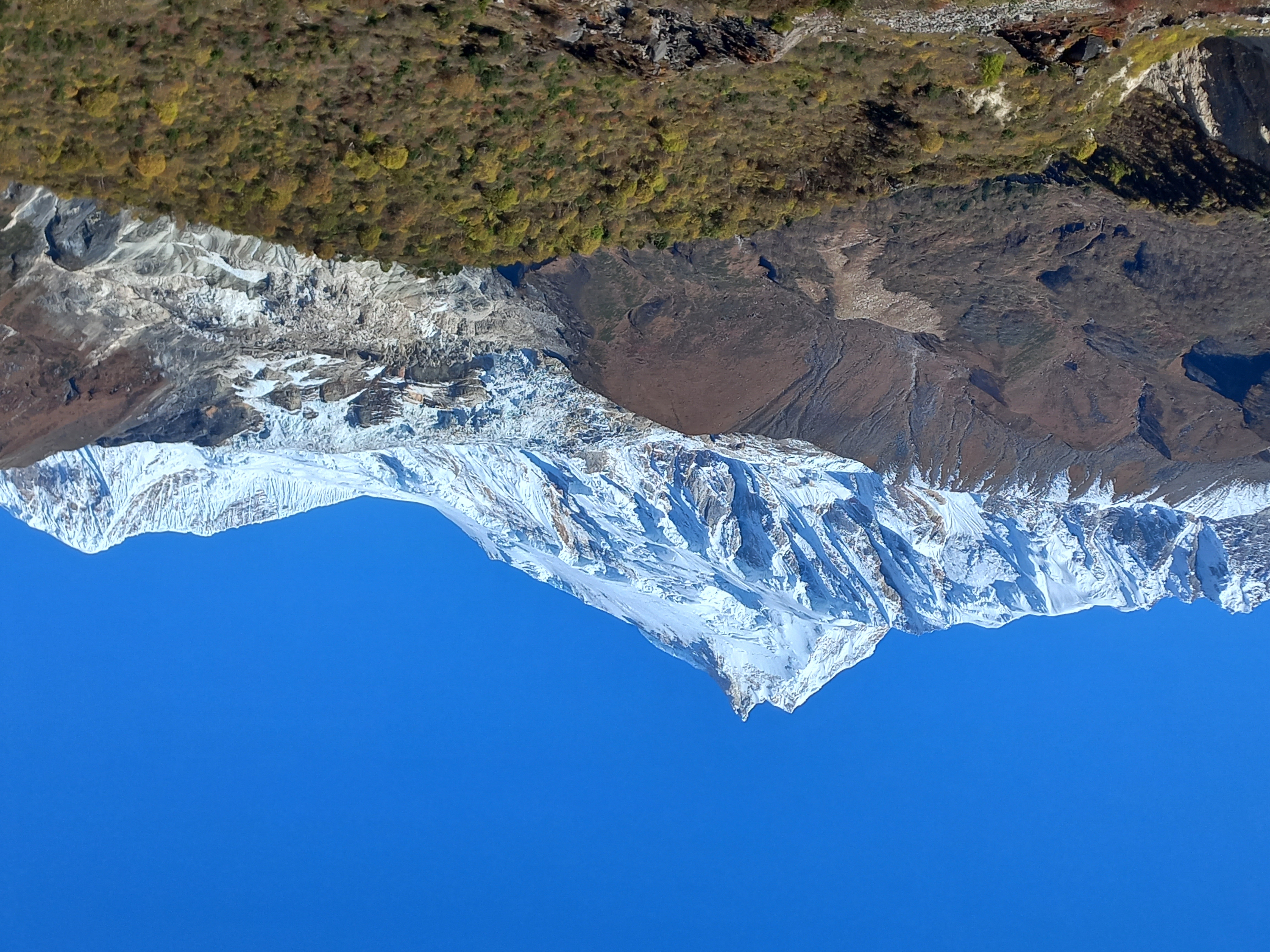
Annapurna I (8,091 m/ 26545.28 feet): Tenth highest peak in the world
Annapurna I is the tenth highest peak in the world and eighth highest peak in Nepal. It is a massif snowy peak of central Himalaya bordered within Myagdi and Kaski district at 28.613611° N and 83.873611° E. The Annapurna massif consists of five significant ridges named Annapurna, i.e. Annapurna I (8091 m), Annapurna II (7,973 m), Annapurna III (7,555 m), Annapurna IV (7,525 m), and Annapurna south (7,219 m). Along with these mountains, Gangapurna (7,455 m), Tilicho (7,134 m), Nilgiri North (7,061 m) and Machhapuchhare (6,997 m) are also the tallest peak of Annapurna range that are identical during Annapurna base camp trek and Annapurna circuit trek. The entire Annapurna massif is protected by establishing Annapurna conservation area in 1992 AD.

Conclusion of the 8 highest Mountains peaks in Nepal over 8000 M
Among the 8 highest peaks in Nepal, four peaks: Mount Everest, Lhotse, Makalu, and Cho Oyu bordered within Nepal and the autonomous region of Tibet, China. The third highest peak in the world bordered with India. These mountains are strong pillar to create peace in the boundary between Nepal, China and India. Out of 8 peaks, only two peaks above 8000 m lie in the north-central part of the country. The tallest mountain peaks in Nepal are the pride of the country. They have valuable contribution to economy of Nepal via Tourism, water supply and survival of riparian habitat in the landscape. The entire mountain range in the Nepal Himalayas is a part of the largest water tower in the world. Thus, conservation of these mountains comes under our responsibility to save life on earth.




